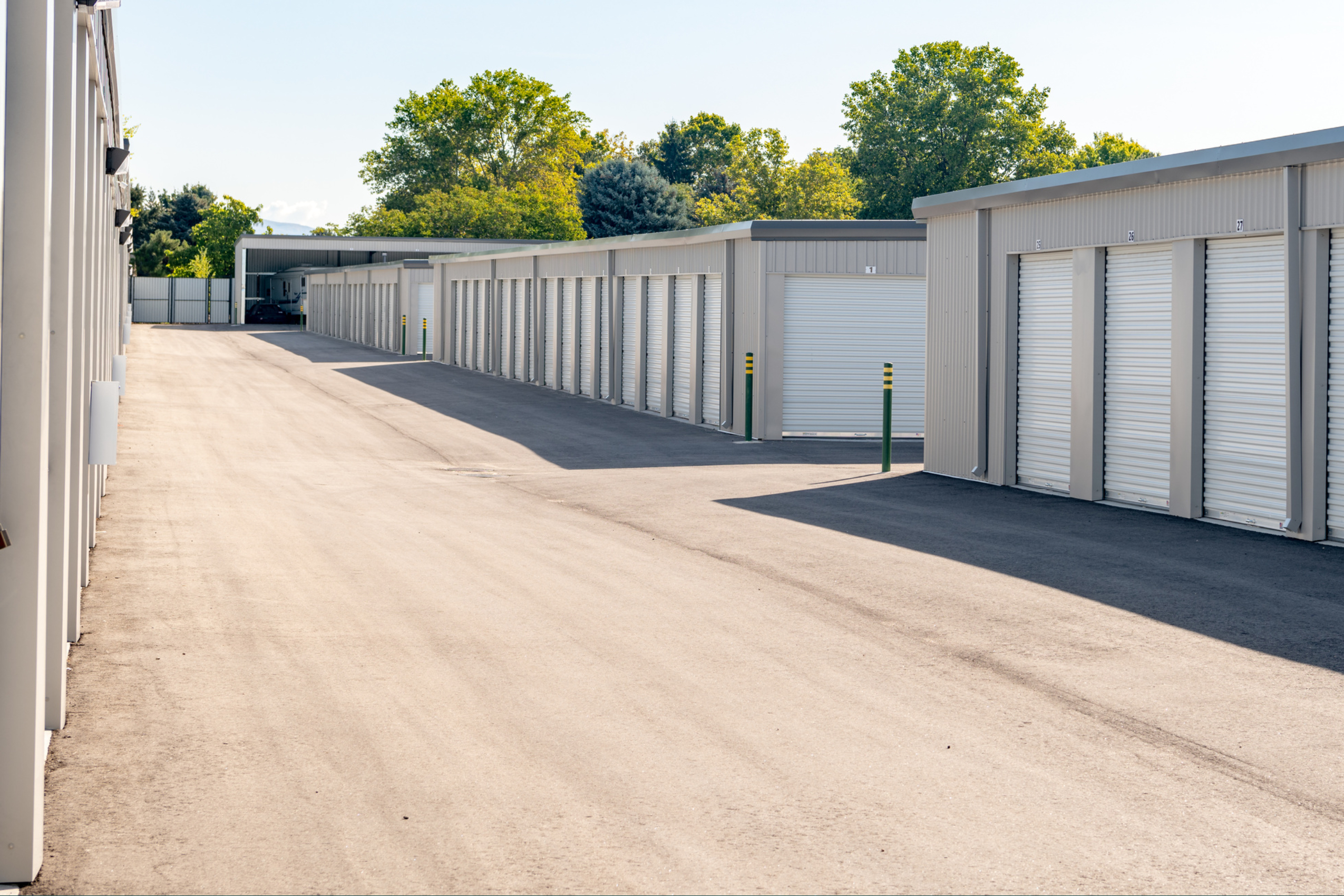The self storage industry has seen a significant surge in popularity over the past few years. As people accumulate more belongings and businesses require additional space for inventory or equipment, the demand for self storage facilities has grown. However, the success of a self storage business is not solely dependent on the demand. The design and layout of the facility play a crucial role in its success. In this article, we will explore the importance of self storage layout design, the key factors to consider when designing a self storage layout, and provide some tips for creating an effective blueprint.
The Basics of Self Storage Layout and Design Developments
Market Research and Feasibility Study
Conducting a comprehensive market analysis is of important in order to effectively identify and assess the existing demand for self-storage buildings within the given area. Taking into account various factors and trends, such as the sales growth in smaller homes on smaller lots, as well as the persistent upward trajectory in the cost of real estate, it is evident that these elements will inevitably contribute to the creation of an amplified demand for offsite storage options. As the dimensions of homes continue to shrink in size, there arises a corresponding surge in the need for adequate self-storage developments to accommodate the demand for extra space and storage solutions.
Perform a Financial Feasibility Study
Let's look at the process of conducting a cost analysis for a self storage development.
- Identify all the costs associated with the project, including land acquisition, construction costs, site preparation, security systems, marketing and advertising, and operational costs.
- Research and gather accurate quotes from contractors, suppliers, and service providers to get a realistic estimate of the costs involved.
- Create a detailed budget that includes all the costs identified in step 1. This will help you track your expenses and ensure that you stay within your budget.
- Consider potential revenue streams, such as rental income from the self storage units, to offset the costs. This will help you determine the financial viability of the project.
- Review and analyze the cost breakdown to identify any areas where you can potentially reduce costs or optimize efficiency.
- Regularly review and update your cost analysis throughout the development process to ensure that you are staying on track and making informed decisions.
Assess the Competition
Understand the key demographics of your target market. In Canada, the majority of the self storage developments are independently owned (Find Storage Fast 2022). The storage unit business competition in Edmonton is fierce, with businesses constantly trying to offer more services at competitive prices. Investing in strategic marketing, automation and top-notch customer service to attract and retain customers will all contribute to business success.
Here of some of the key players in Edmonton, Alberta:
- U-Haul: Known for their moving services, U-Haul also offers storage units in various sizes. They have multiple locations across Edmonton, making them a convenient choice for many customers.
- StorageMart: StorageMart offers a wide range of storage solutions, from small lockers to large units. They also provide climate-controlled units, which are ideal for storing sensitive items.
- Sentinel Storage: Sentinel Storage is a Canadian-owned and operated company with several locations in Edmonton. They offer a variety of storage solutions, including vehicle storage.
- Access Storage: Access Storage is another major player in the Edmonton storage unit business. They offer a wide range of storage options, including portable storage units.
One of the key strategies to navigate the business competition is to understand the needs and preferences of the customers. Businesses need to offer flexible storage solutions that cater to the diverse needs of their customers. They also need to ensure the security of the storage units and provide excellent customer service.
Understand What Factors Drive Your Self Storage Development.
According to Storage Café, Generation X and Baby Boomers are the most likely demographic to use a self storage unit. The top six drivers of the self storage industry include:
- Divorce. An economy that results in financial instability indirectly influences divorce rates. Financial arguments sit at the top of the list of reasons why people get divorced and often propels the self-storage industry.
- Downsizing. Empty nesters who are downsizing their homes often need self storage during the transition to a smaller home. They also have accumulated sentimental heirlooms over the years that require long-term storage.
- Displacement. During the development cycle, people need to the space to store their possessions while moving or during renovations.
- Death. Often the property of the deceased person needs to be vacated in the near future. Self-storage is often the solution for the loved-ones that are tasked with dealing with the remaining possessions.
- Density. Higher density means less space to store your possessions. The footprint of apartments and houses are shrinking compared to a few decades ago. The City of Edmonton has also changed bylaws for certain neighborhoods in Edmonton to allow for garden suites thereby increasing density.
- Disaster. Natural disasters are ramping up with climate change. Possessions that are salvageable after a fire or flood will end up in a self-storage until homes can be rebuilt. The rebuilding process is long due to the slow process of insurance claims and the shortage of skilled trade workers.

Choosing a Suitable Commercial Real Estate Location
Choose a suitable location with good visibility and accessibility from major roads or adjacent service roads. For example, there are a number of self storage locations on Highway 16X and 215th Street in west Edmonton that are highly visible and convenient.
Things to Watch Out For:
- Zoning regulations. If it is zoned for residential but you want to build a commercial building you may be blocked from construction permits. Applying for a zoning variance may be the solution to this problem.
- Land costs and hidden costs. Is the entire portion of the land useable? Are there environmental reserves on the land that must be preserved? What are the hidden variables? Does the site require "cut and fill"? Cut and fill refers to the process of taking clay from another location and placing it another to make the ground more level. Cut and fill costs can vary on distance the dump truck requires to travel and the slope of the existing ground. Other hidden costs could include having to upgrade an existing road and adding in fire hydrants near the new development.
- Development fees and permits required for self-storage facilities
Facility Layout
Things to consider:
- Decide on the unit configuration based on the market demand. Include a variety of sizes, from small lockers to larger units. A 10x10 self storage unit and a 10x20 self storage unit are the most popular. Consider what items will be stored at your future storage unit for your target market. The most common items include furniture, appliances, tools, equipment, extra commercial inventory, documents, and electronics.
- Plan for add-on services like climate-controlled units, vehicle storage, or commercial spaces for organizations that need storage (i.e. excess inventory).
- Allocate space for office/administration, customer service area, parking and restrooms.
Building Design
- Choose a mini storage construction design that complements the surrounding environment and adheres to local architectural guidelines. For example, you will see a stark contrast between the south and north sections of Acheson, Alberta. The new commercial buildings are held to a different set of architectural standards.
- A design that keeps your customer’s property out of the elements.
- Optimize the design for cost-efficiency and functionality, considering factors like construction materials and energy efficiency.
Traffic Flow and Accessibility
- Plan for efficient vehicle access and traffic flow within the facility. The weight of the vehicles accessing the property will be factored into the road design. On occasion, the municipality will require the developer to upgrade the access road to accommodate for more traffic. This should be factored into the financial feasibility study prior to construction.
- Provide ample turning radius and sufficient asphalt thickness to accommodate for different types of moving trucks and other vehicles including firetrucks and garbage trucks.
- Consider accessibility for individuals with disabilities.
Climate Control and Ventilation- If offering climate-controlled units, design the facility to maintain proper temperature and humidity levels. Ensure adequate ventilation in the storage areas to prevent mold and mildew.
- If offering climate-controlled units, design the facility to maintain proper temperature and humidity levels. Ensure adequate ventilation in the storage areas to prevent mold and mildew.
Security Measures and Fire Safety- Implement robust security systems, surveillance cameras and security personnel including 24/7 accessibility with automated gates and locks. The layout should be designed to ensure clear visibility and monitoring throughout the facility.
- Installing fire alarms, smoke detectors, and sprinklers and fire exits are all essential parts of the building design. Incorporating fire-resistant materials and construction techniques into the storage design is often mandatory.
- Implement robust security systems, surveillance cameras and security personnel including 24/7 accessibility with automated gates and locks. The layout should be designed to ensure clear visibility and monitoring throughout the facility.
- Installing fire alarms, smoke detectors, and sprinklers and fire exits are all essential parts of the building design. Incorporating fire-resistant materials and construction techniques into the storage design is often mandatory.
Customer Amenities
- Include amenities such as moving carts, packing supplies, and loading/unloading areas for customers.
- Consider adding a customer lounge or waiting area.
- Automated online payment systems simplify the process for both the business and the customer.
- Include amenities such as moving carts, packing supplies, and loading/unloading areas for customers.
- Consider adding a customer lounge or waiting area.
- Automated online payment systems simplify the process for both the business and the customer.
Stormwater Management and Landscaping
- Enhance your property with cost effective low maintenance landscaping. Incorporating drought tolerant plants and shrubs will reduce your overall costs over time and reduce maintenance costs.
- Proper stormwater management techniques to prevent flooding during heavy rain and snow melt is of utmost importance. Proper drainage may include designing and constructing an onsite dry pond to manage stormwater overflow.
- Enhance your property with cost effective low maintenance landscaping. Incorporating drought tolerant plants and shrubs will reduce your overall costs over time and reduce maintenance costs.
- Proper stormwater management techniques to prevent flooding during heavy rain and snow melt is of utmost importance. Proper drainage may include designing and constructing an onsite dry pond to manage stormwater overflow.
Compliance and Regulations
- Comply with local building codes, zoning regulations, and safety standards.
- Obtain all necessary permits and licenses before construction.
Planning for Future Expansion
- Leave adequate space for adding more storage, if the market permits.
- Leave adequate space for adding more storage, if the market permits.
Bolson Engineering and Environmental Services is passionate about development. We have partnered with developers across Alberta to streamline their self storage developments. Have a vision? Let us engineer your ideas. Contact us.

